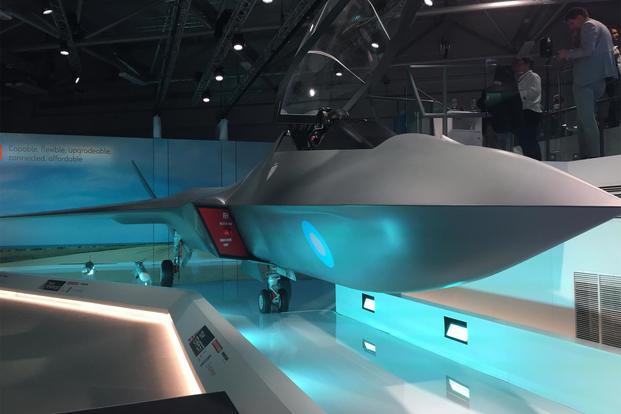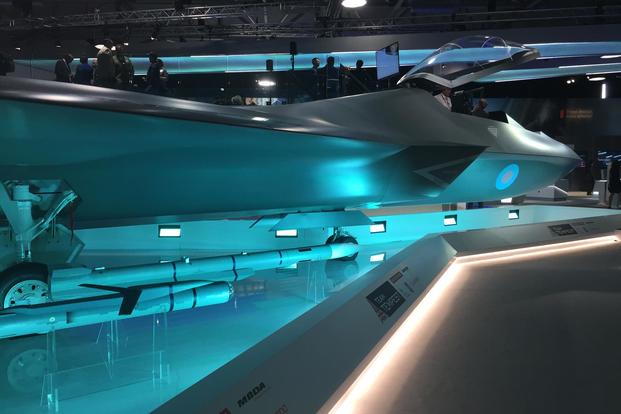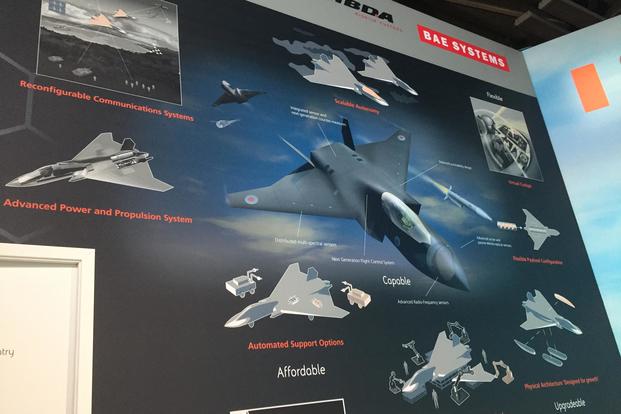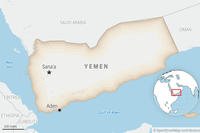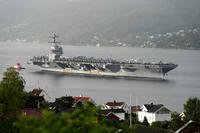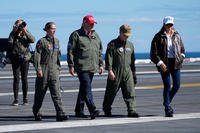Whether or not U.S. defense companies end up working on the U.K.'s recently unveiled high-end fighter concept, Tempest, officials know that partnerships will blossom as they develop ideas for the plane.
"When we talk about partnership, you see one big airplane, you see [the F-35 Joint Strike Fighter], which is clearly a great example of how we're building something together," said Air Commodore James Linter, the Royal Air Force air attaché for the United Kingdom, said in a recent interview with Military.com at the British Embassy in Washington, D.C.
Both the United States and the U.K. have invested in the fifth-generation F-35; variants of the fighter are now undergoing testing on American and British aircraft carriers.
"Very often, the technologies inside [the aircraft] is actually what will end up being a partnership," Linter said.
Related content:
- As UK Showcases Its Next-Gen Fighter, US Stresses Interoperability
- Air Force Wants to Invest Heavily in Next-Gen Technologies
- Air Force Creates Office to Help It Shake Up Acquisition Process
Earlier this month, U.K. Defense Secretary Gavin Williamson pitched U.S. investment in the Tempest, which was unveiled as a concept at the Farnborough International Airshow this summer.
"Our program will transform our defense business," Williamson said at an Atlantic Council event during a trip to Washington, D.C.
Williamson added, with tongue in cheek, that he was "very confident we can produce the world's best fighter aircraft and something that I very much hope the U.S. Air Force would be looking to buy in the future."
Since its concept debut, some have described Tempest as a sixth-generation fighter, while other critics say it more closely resembles a fifth-gen fighter.
The optionally-manned Tempest is intended to replace the Eurofighter Typhoon and will be a joint venture between BAE Systems, Leonardo, Rolls-Royce and MBDA. It is expected to fly by 2035.
Since the announcement, U.S. officials have stressed Tempest must not only be interoperable with U.S. aircraft, but also interoperable with the F-35B Joint Strike Fighters the U.K. now owns and operates.
"As the U.K. decides to go forward with a system that could be called Tempest, we would hope that it would be as interoperable as possible with the great system that they've just acquired ... the F-35B," U.S. Air Forces Europe-Africa commander Gen. Tod Wolters said during a teleconference last month.
In June, four of the jets made the trip from U.S. Marine Corps Air Station Beaufort, South Carolina, to be permanently stationed in the U.K. Another five crossed the Atlantic this month. The U.K. plans to buy nearly 50 of the fifth-generation stealth fighter over the next decade.
Linter, like U.S. officials stateside, has emphasized that aircraft produced today don't just fly to dogfight or drop bombs but also, more importantly, to collect information.
"It's not just a platform, or one airplane in the old sense, it's a low-observable wrapper, surrounding a whole load of sensors and intelligence gathering and IT and [artificial intelligence] and that all develops in time," he said.
He added, "While the outside will look the same, I think the inside will change, and that's where people will partner, share ideas. Different people have different concepts, and because of the different approaches people can have, culturally, geographically, you'll end up having ideas that others won't have, and that's where you get the best cooperation, really."
"This is early days. As they develop the concepts, [officials] will engage with partners to see, you know, who wants to go along," Linter said.
-- Oriana Pawlyk can be reached at oriana.pawlyk@military.com. Follow her on Twitter at @oriana0214.
